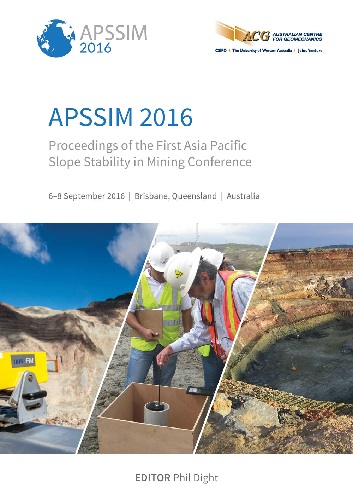ETAG certified rockfall barriers — new design approach according to UNI 11211:4/2012

|
Authors: Cerro, M; Giacchetti, G; Lelli, M; Grimod, A; Arul, A |
DOI https://doi.org/10.36487/ACG_rep/1604_28_Cerro
Cite As:
Cerro, M, Giacchetti, G, Lelli, M, Grimod, A & Arul, A 2016, 'ETAG certified rockfall barriers — new design approach according to UNI 11211:4/2012', in PM Dight (ed.), APSSIM 2016: Proceedings of the First Asia Pacific Slope Stability in Mining Conference, Australian Centre for Geomechanics, Perth, pp. 443-456, https://doi.org/10.36487/ACG_rep/1604_28_Cerro
Abstract:
European Technical Approval Guideline (ETAG) 027 ensures that a tested falling rock protection kit (interception structure, support structure and connection elements) is able to withstand a series of impacts for a fixed energy level. The main manufacturers of flexible rockfall barriers have tested and certified their products in compliance with this guideline. To take into account the differences between the field tests, which are carried out in controlled state, and the real conditions in situ, a new guideline was developed in January 2012 by the Italian Organization for Standardization, Ente Nazionale di Unificazione (UNI), named UNI 11211-4:2012. The purpose of this guideline is to ensure a high level of safety for the structures protected by the flexible rockfall barriers considering all the possible uncertainties that are normally found during the design process (height of the bounce, mass of the rock, velocity etc.). The calculation methodology suggested by the UNI 11211 4:2012 is the well-known limit state design approach. The purpose of this paper is to present the differences between tests and real in situ conditions, and to introduce the new design approach proposed by the UNI 11211:4/2012. Some practical aspects on the installation of the rockfall barriers that need to be considered during the design stage will also be highlighted.
Keywords: flexible rockfall barrier design
References:
AASHTO (American Association of State Highway and Transportation Officials) 2003, Recommended procedures for the testing of rock-fall, standing committee on highways, prepared by JD Higgins.
Arndt, B, Ortiz, T & Turner, AK 2009, ‘Colorado’s full-scale field testing of rockfall attenuator systems’, Transportation Research Circular E-C141, prepared for the Transportation Research Board, sponsored by the Colorado Department of Transportation (CDOT).
Chai, S, Yacoub, T, Charbonneau, K & Curran, JJ 2013, ‘The effect of rigid body impact mechanics on tangential coefficient of restitution’, GeoMontreal 2013, Montreal.
EOTA (European Organisation for Technical Approval) 2008, ETAG 027: Guideline for European technical approval of falling rock protection kits, Brussels, www.eota.be
Giani, GP 1997, ‘Rockfall’, Hevelius Edizioni.
UNI (Ente Nazionale Italiano di Unificazion) 11211-4:2012, ‘Opere di difesa dalla caduta massi’.
WSL (Swiss Federal Institute for Forest, Snow and Landscape Research) 2001, Guideline for the approval of rockfall protection kits, Swiss Agency for the Environment, Forests and Landscape, Bern, Switzerland.
© Copyright 2026, Australian Centre for Geomechanics (ACG), The University of Western Australia. All rights reserved.
View copyright/legal information
Please direct any queries or error reports to repository-acg@uwa.edu.au
View copyright/legal information
Please direct any queries or error reports to repository-acg@uwa.edu.au